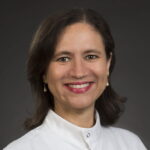In 1927, Fay described a painful condition over the common carotid bifurcation, without any structural abnormality. The condition was described as Fay’s Syndrome or Idiopathic Carotidynia. The pain is located in the anterior part of the neck, over the bifurcation of the carotid artery, and worsens with head movements, chewing, yawning, coughing, or swallowing. There is still controversy if the condition should be classified as a distinct clinical entity, or as a symptom associated with other diseases. Carotidynia has an extensive differential diagnosis, including pharyngitis, otitis, temporomandibular joint arthralgia, and myalgia. It is important to consider that the pain could be attributable to other causes of neck pain, such as carotid dissection or vasculitis, so further evaluation is required to rule out secondary pain. Carotid artery pathology has also been known to occur at high altitudes due to aberrant baroreceptor response in the carotid bulb.
A potential condition is a bifurcation aneurysm, which might affect the internal carotid artery. A close evaluation for carotid stenosis will be required.
Like what you’re learning? Download a brochure for our Orofacial Pain and Oral Medicine certificate or master’s degree program.
Evaluation of carotid artery bifurcation
Neurological examination: The typical neck pain might be accompanied by other symptoms such as hoarseness, choking when swallowing, and fainting attacks, and a complete neurological examination will be required. The vagus and glossopharyngeal nerves might be affected by inflammation of the carotid sheath.
Palpation: It is possible for a patient to experience transient perivascular inflammation of the carotid artery, which will produce acute pain at the level of the carotid bifurcation. Palpating the area will identify if the source of the pain is the vessel or if there is tenderness of cervical muscles such as SCM which has been implicated with cervical problems. The common carotid artery is palpated on the neck below the jaw and lateral to the larynx/trachea (i.e., mid-point between your earlobe and chin) using the middle and index fingers.
Auscultation: Auscultation of carotid identifies patients with high-risk atherosclerosis. This assessment provides information about cardiac function and the quality of blood flow through the artery. A partial obstruction will produce a sound called bruit.
Imaging: There are reports suggesting that carotidynia is a distinct disease characterized by the presence of enhancing soft tissue in the carotid sheath, supporting the classification as an inflammatory disease. Possible images to validate this diagnosis are positron-emission tomography and CT. The use of ultrasound has also been described, with narrowing of the lumen and thickening of the carotid bulb in the area of tenderness. MRI studies have failed to show atherosclerotic disease of the vessel.
Laboratory tests: To rule out an immunological condition, a panel with ANCA, ANA, and anti-nucleoprotein has been suggested.
Treatment
Treatment with nonsteroidal anti-inflammatory drugs or glucocorticoids usually produces symptom resolution; however, a comprehensive workup of the patient is required to rule out a neurological or vascular etiology.
Earn an Online Postgraduate Degree in Orofacial Pain and Oral Medicine
Are you interested in a variety of issues focused on orofacial pain, medicine and sleep disorders? Consider enrolling in the Herman Ostrow School of Dentistry of USC’s online, competency-based certificate or master’s program in Orofacial Pain and Oral Medicine.
References
- Hafner F, Hackl G, Haas E, Eller P, Gstettner C, Vollmann R, Brodmann M. Idiopathic carotidynia. Vasa. 2014 Jul;43(4):287-92. doi: 10.1024/0301-1526/a000365. PMID: 25007908.
- Abbasi A, Khan MAB. Carotidynia. 2022 Jul 26. In: StatPearls [Internet]. Treasure Island (FL): StatPearls Publishing; 2023 Jan–. PMID: 32809676.
- Hersh SP, Gerard P, Hersh J. Carotidynia Versus Transient Perivascular Inflammation of the Carotid Artery (TIPIC) Syndrome: Finding Common Ground. Cureus. 2021 Sep 3;13(9):e17684. doi: 10.7759/cureus.17684. PMID: 34650859; PMCID: PMC8487627.
- Clark HV, King DE, Yow RN. Carotidynia. Am Fam Physician. 1994 Oct;50(5):987-90. PMID: 7942417.
- Policha A, Williams D, Adelman M, Veith F, Cayne NS. Idiopathic Carotidynia. Vasc Endovascular Surg. 2017 Apr;51(3):149-151. doi: 10.1177/1538574417697212. PMID: 28330435.
- Parra A, Okada T, Lin PH. Carotidynia in high-altitude travelers. Vascular. 2017 Dec;25(6):609-611. doi: 10.1177/1708538117702238. Epub 2017 May 22. PMID: 28530483.
- Chen XW, Li J, Ren CP, Jiao Y. Unilateral neck pain and headache, vocal hoarseness, swallowing difficulty, and fainting attacks: a case report of idiopathic carotidynia with unusual clinical manifestations. Chin Med J (Engl). 2019 Oct 5;132(19):2392-2394. doi: 10.1097/CM9.0000000000000466. PMID: 31567387; PMCID: PMC6819046.
- Holay Q, Hak JF, Varoquaux A. Transient Perivascular Inflammation of the Carotid Artery (TIPIC) Syndrome: An Uncommon Cause of Anterior Neck Pain. Pain Med. 2022 Jan 3;23(1):212-213. doi: 10.1093/pm/pnab286. PMID: 34550372.
- Cibulka MT, Herren J, Kilian A, Smith S, Mahmutovic F, Dolles C. The reliability of assessing sternocleidomastoid muscle length and strength in adults with and without mild neck pain. Physiother Theory Pract. 2017 Apr;33(4):323-330. doi: 10.1080/09593985.2017.1302539. Epub 2017 Apr 5. PMID: 28379051.
- Pickett CA, Jackson JL, Hemann BA, Atwood JE. Carotid artery examination, an important tool in patient evaluation. South Med J. 2011 Jul;104(7):526-32. doi: 10.1097/SMJ.0b013e31821e9493. PMID: 21886054.
- Introduction to Health Assessment for the Nursing Professional. December 2021. Source: https://pressbooks.library.torontomu.ca/assessmentnursing/
- Amaravadi RR, Behr SC, Kousoubris PD, Raja S. [18F] Fluorodeoxyglucose positron-emission tomography-CT imaging of carotidynia. AJNR Am J Neuroradiol. 2008 Jun;29(6):1197-9. doi: 10.3174/ajnr.A1013. Epub 2008 Mar 20. PMID: 18356468; PMCID: PMC8118853.
- Kosaka N, Sagoh T, Uematsu H, Kimura H, Miyayama S, Noguchi M, Itoh H. Imaging by multiple modalities of patients with a carotidynia syndrome. Eur Radiol. 2007 Sep;17(9):2430-3. doi: 10.1007/s00330-006-0550-5. Epub 2007 Jan 13. PMID: 17221207.
- Burton BS, Syms MJ, Petermann GW, Burgess LP. MR imaging of patients with carotidynia. AJNR Am J Neuroradiol. 2000 Apr;21(4):766-9. PMID: 10782793; PMCID: PMC7976649.
- Santarosa C, Stefanelli S, Sztajzel R, Mundada P, Becker M. Carotidynia: A Rare Diagnosis for Unilateral Neck Pain Revealed by Cross-Sectional Imaging. Case Rep Radiol. 2017;2017:7086854. doi: 10.1155/2017/7086854. Epub 2017 Sep 24. PMID: 29147596; PMCID: PMC5632850.
- Abrahamy M, Werner M, Gottlieb P, Strauss S. Ultrasound for the Diagnosis of Carotidynia. J Ultrasound Med. 2017 Dec;36(12):2605-2609. doi: 10.1002/jum.14321. Epub 2017 Jul 14. PMID: 28708261.

